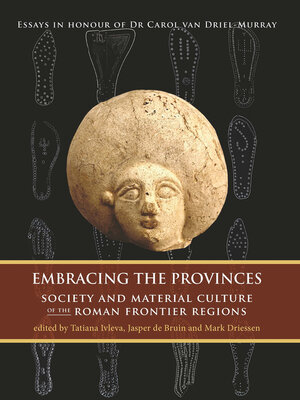Embracing the Provinces
ebook ∣ Society and Material Culture of the Roman Frontier Regions
By Tatiana Ivleva

Sign up to save your library
With an OverDrive account, you can save your favorite libraries for at-a-glance information about availability. Find out more about OverDrive accounts.
Find this title in Libby, the library reading app by OverDrive.



Search for a digital library with this title
Title found at these libraries:
| Library Name | Distance |
|---|---|
| Loading... |
Embracing the Provinces is a collection of essays focused on people and their daily lives living in the Roman provinces, c. 27 BC-AD 476. The main aim is to showcase the vibrancy of Roman provincial studies and suggest new directions, or new emphasis, for future investigation of Roman provincial world. It capitalizes on a wealth of data made available in recent decades to provide a holistic view on life in the Roman provinces by analyzing various aspects of daily routine in the frontier regions, such as eating, dressing, and interacting. The contributors, who are acknowledged experts in their fields, make use of innovative interpretations and modern approaches to address current issues in the study of the provinces and frontiers of the Roman Empire.
Twenty-one essays are cohesively structured around five themes, encompassing studies on the female and juvenile presence on Roman military sites, Roman provincial cooking, and Roman cavalry and horse equipment. For the first time in the Roman provincial scholarship the volume has a special section on the subject of Roman leather, providing a much-needed overview of the current stance of work. A few papers deal also with experimental archaeology. The essays reflect a wide geographical and chronological range, while retaining thematic consistency, and will be of great interest to those working in Roman archaeology and provincial studies.
Twenty-one essays are cohesively structured around five themes, encompassing studies on the female and juvenile presence on Roman military sites, Roman provincial cooking, and Roman cavalry and horse equipment. For the first time in the Roman provincial scholarship the volume has a special section on the subject of Roman leather, providing a much-needed overview of the current stance of work. A few papers deal also with experimental archaeology. The essays reflect a wide geographical and chronological range, while retaining thematic consistency, and will be of great interest to those working in Roman archaeology and provincial studies.







